Modular Rollup Mantle Current Status and Interaction Guide
Modular Rollup Mantle Current Status and Interaction GuideAuthor: William M. Peaster, Senior Author at Bankless; Translation: LianGuaixiaozou
Ethereum was originally a “single-chain” blockchain.
This means that the original Ethereum network was only responsible for providing its own security, data availability, and transaction execution capabilities.
In recent years, the Ethereum ecosystem has made significant progress towards a more “modular” vision, allowing the Ethereum network to leverage external layers to expand its performance to new heights.
- Why not use protocol tokens as gas tokens for rollups?
- Opinion The general profit effect of Friend.tech will gradually disappear.
- Improving user experience and reducing interaction steps How can intent-based transactions support the next wave of Web3 narratives?
So far, this expansion has been manifested in the form of L2 rollups on Ethereum. They are called rollups because they aggregate many transactions and efficiently batch them to be uploaded to Ethereum as an external execution layer, making Ethereum transactions very cheap and fast.
With the development of modular blockchains, more and more projects are exploring the possibilities of combining rollups – in other words, providing their own execution while relying on Ethereum’s security and using separate protocols to meet data availability requirements.
Mantle is such an L2.
1. Mantle Introduction, Modular Rollup
Mantle is an optimistic rollup (as opposed to zk rollup).
This L2 is not based on the popular Optimism modular OP Stack framework, but rather a fork of Optimism’s Optimistic Virtual Machine (OVM) system.
This covers the execution aspect of Mantle – it is an L2, so we already know it inherits security from Ethereum. But what about data availability?
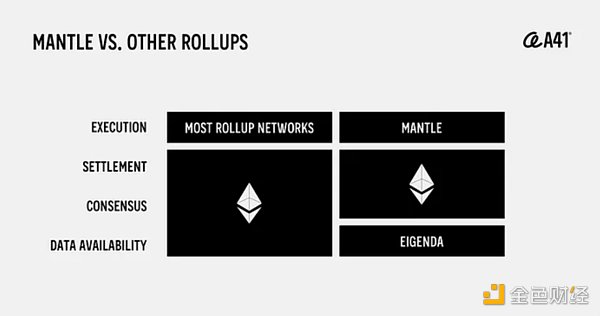
In terms of data availability, Mantle is particularly noteworthy because it is the first rollup that plans to utilize the EigenDA data availability solution through EigenLayer after going live. The overall idea is efficiency first. Over time, it aims to reduce the cost of storing transaction data by using a custom dedicated solution, EigenDA, for data availability (rather than relying on Ethereum).
2. Current Status of Mantle
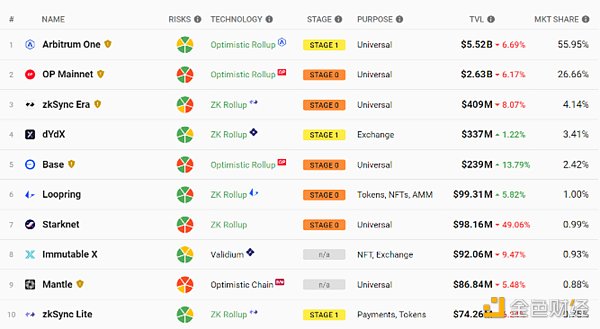
Mantle launched its mainnet in July 2023. Since then, the L2 has accumulated a total locked value (TVL) of over 86 million USD, making it the ninth-largest rollup at the time of writing (according to L2BEAT).
It is important to note that Mantle is still in the early stages of development. As the L2BEAT dashboard of this rollup shows, its ongoing improvement status means that it currently has noticeable weaknesses in almost all of its core pillars (from data availability to state verification).

Therefore, if you decide to explore Mantle now, please be careful. Do not invest more than you can afford to lose!
3. How to operate Mantle?
Last week, I introduced how to use Linea L2.
Just as exploring Linea is an early way to improve the experience around zkEVM, exploring Mantle provides an early opportunity to improve the experience around modular rollup.
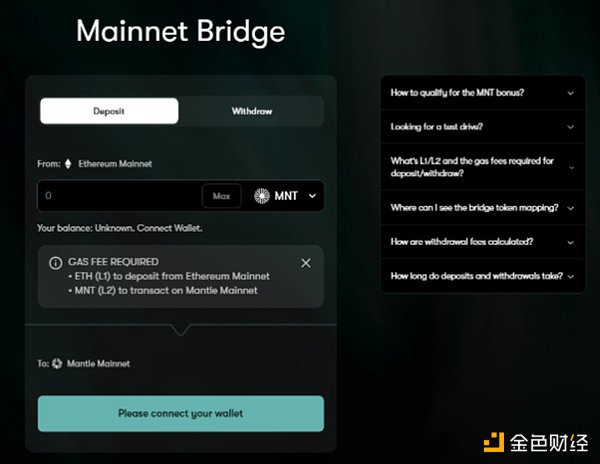
The operation points are also very similar:
(1) Prepare your wallet – For example, add Mantle through Chainlist.
(2) Bridge funds – Mantle uses its native MNT token to pay for gas fees, so bridging MNT and some ETH is a good start.
(3) Try Mantle applications – Start with some applications that have already been deployed to L2 for the first batch of transactions.
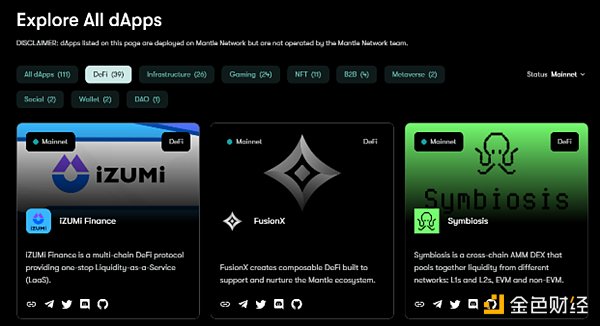
Once you have some funds on Mantle, you can use the Mantle website’s ecosystem tracker to search for applications and explore different verticals. For example, there are currently some Mantle applications that you might consider exploring:
· iZUMi Finance (DeFi) – A multi-chain “liquidity-as-a-service” protocol that provides on-chain order book-style decentralized exchange iZiSwap if you are interested in trading or providing liquidity.
· Symbiosis Finance (DeFi) – An automated market maker (AMM) decentralized exchange specializing in cross-chain transactions.
· NFTs2Me (NFT) – A no-code NFT collection creation platform that makes it easy to publish individual artwork or entire collections as NFTs on Mantle.
· Holograph (NFT) – A full-chain NFT mining protocol that regularly hosts free open-source versions of artwork releases with the support of a range of networks including Mantle.
· Lootex (NFT) – The first NFT marketplace on Mantle specifically dedicated to game NFTs.
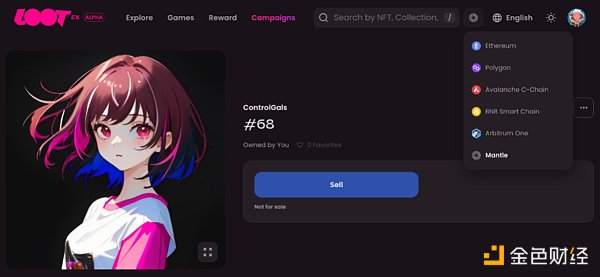
Please note that Mantle is still in its early stages, so if you want to delve into the thriving ecosystem of this L2, please proceed with caution. The new block space opportunities come with risks, so take it step by step and don’t venture too far out of your comfort zone!
We will continue to update Blocking; if you have any questions or suggestions, please contact us!
Was this article helpful?
93 out of 132 found this helpful
Related articles
- MEV Development Full Analysis From Zero-Sum Game to Separation of Powers
- In-depth discussion on the whole-chain game and the representative work of the race, Dark Forest.
- LianGuaiWeb3.0 Daily | Binance Futures Launches Copy Trading
- IOSG Panoramic scan of on-chain data tools track.
- Who are the top 25 revenue accounts on friend.tech?
- Evening Must-read | Can Web3 Social Networking Generate a New Killer Application?
- Which public security authorities in China have jurisdiction over virtual currency exchange cases?






